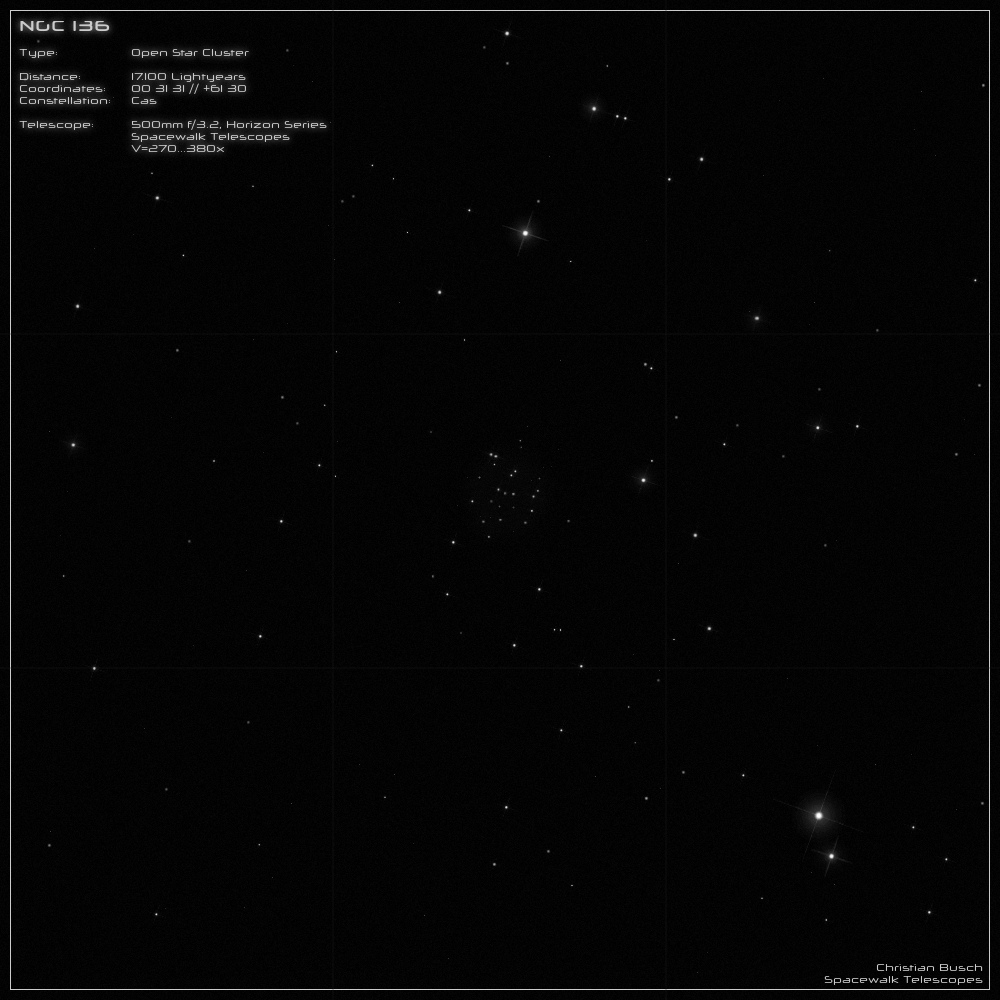NGC 136, Open Star Cluster
NGC 136 is an open star cluster in the constellation Cassiopeia, discovered in 1788 by F.W. Herschel. Its distance is over 17,000 light-years,
which is quite distant compared to other clusters.
Its visual magnitude is only 11.6mag, which makes it a difficult object to observe in smaller telescopes. The large distance is also the reason
for the small apparent size, which is given with 1.2 arcminutes. The true diameter can therefore be determined to 6 light-years. The brightest
stars are only 14mag bright, so it needs a larger telescope to resolve the cluster.
----------------------------------------------------------------------------------------------------------------------------------------------
Even in a 20 inch telescope NGC 136 does not appear very bright. At low magnification, a small, moderately bright, diffuse spot of light can
be seen in the star field. The background appears grainy. However, when the magnification is increased to 370x, the appearance changes. The
diffuse background almost disappears and the Open Cluster resolves nicely into very faint individual stars. In total I could detect about 20
member stars in NGC 136. The faintest of them flash out of the velvet black background from time to time. The cluster itself appears roundish
and shows no increase in stellar density towards the center.
NGC 136 definitely belongs to the more difficult objects. Even with 12" you will hardly be able to see more than a handful of single stars -
but it is fun to elicit at least a few of its secrets from this faint object.

